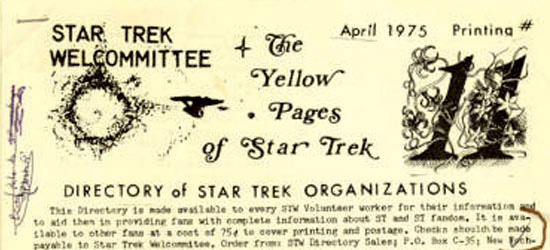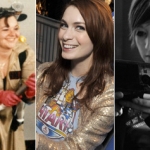An oft-quoted proverb is “Only three things in life are certain: birth, death, and change.” This cycle is also true of social cultures. New ones are being born. Established ones are changing. Older and rigid ones are dying, especially if they are closed to change. The saying “The only thing that is constant is change” is credited to the ancient Greek philosopher Heraclitus, who lived in the early 500s and late 400s BC. Yet, all of us, in all walks of life, still struggle with changes in our lives and worlds.
It’s my conclusion that the Identity Crisis that is consuming some areas of geek/nerd culture can be boiled down to the struggle over change. A notable portion of the Old Guard wants to keep their favorite fandoms as they perceive that world to be. This desire is understandable. The environment is one where they feel secure, a place where they belong and where they feel comfortable opening up emotionally and socially. In their worldview, not every place in society was a place they could belong. Now, there is an influx of NuFans, usually younger people, raised on a glut of available technology and information. The use of technology in their daily life is the norm. Geekdom is the mainstream in their worldview. This group is more used to being accepted by all levels of their society because of their knowledge of and skill with technology.
Cosplay has become an accepted form of fan expression, and it’s gaining popularity. Cosplayers are not in it just for the attention, especially a female trying to attract a male’s attention. Do you really think someone is going to spend hours, days, weeks, and months of their free time researching, developing, and constructing an elaborate character costume just in the hope of inciting lust in a geek male? There are many guys who relish being a part of the cosplay community. No one ever says, “Oh, they just want to make girls notice them!” A “sexy” cosplay outfit is not an open invitation to sexual remarks, unwanted touching, or sneaky photos of certain body parts, even if the wearer/creator of that costume intended it to be sexy. Most of the time, the cosplayer is accurately portraying the way a character is presented in comic books, films, television, video games, and anime.
While some of you geek/nerd guys had your heads buried in a comic series, were playing hours of your favorite video or role-playing game, or were binge-watching a particular franchise, something happened. Many geek/nerd gals discovered they could love the same fandoms, play the same games, and read comics while still honoring their feminine side, too. There’s always been an influential female presence in the Geek culture, even if mainstream media and a number of the geek guys failed to notice, and over the past 50 years, the numbers of females identifying as geeks and participating in fandoms have increased steadily. During those same years, the first generations of Girl Geeks grew up and had children, often with a Guy Geek. A lot of these families had daughters and nieces who, in turn, were raised in a geek-saturated environment, creating a legacy of female geeks. In this time, they are adults who are influencing their female friends and young daughters and nieces in the ways of geek culture. They know it’s okay to let both the geek and the girl show through in their lives.

Members of the LASFS in 1940 included Ray Bradbury, Robert Heinlein, and Ray Harryhausen. (Photo c/o Al Lewis)
Geek culture developed from the literary science fiction and superhero comic book fans of the 1930s. Fans began to come together through fanzines and science fiction clubs. For a couple of decades, fandom and nerd culture was based around these two genres. A few film fandoms grew out of these decades like Flash Gordon, The Invisible Man, and Buck Rogers. Visual media fandoms didn’t flourish until the 1960s when television discovered there was a grown-up audience for science-fiction programming with Lost in Space. However, Star Trek was the first American science-fiction television show to gain a major fandom following. Over time, it has grown into one of the most enduring fandoms in geek culture.
At that time, the old-school science fiction fans were very unhappy with the influx of all those “media fans”. Some even called it a Barbarian Invasion. Old fans found themselves outnumbered at conventions. They felt these newbie fans were destroying the close-knit intimacy of fandom. The old fans considered the new fans to be huge mobs uneducated in the ways of fandom. They didn’t know the language, customs, hadn’t “paid their dues” or learned at the feet of the “right” icons, a lot were female, and none were interested in “real” science fiction. In turn, the newer fans found the older fans hostile, unwelcoming, snobbish, rigid, and misogynistic. They were perceived as cliques who looked down on the new fans, treating them as if they were something nasty they had stepped in walking down the street. Sound familiar?
Groups relegated to this much-despised fringe element included Star Trek and Star Wars fans; the first costume wearing-fans (often dressed in Trek uniforms or as characters from Star Wars); and upstart fandoms from new shows and films. Has anyone heard of the Runners? They were essentially the Browncoats of the late 1970s. A fandom based around the movie Logan’s Run, most participants were young, dedicated, and boisterous. Anecdotes from conventions describe them as wearing nicely done uniforms, but prone to spend a great deal of their time chasing each other around convention areas, zapping each other with blasters. Conventions across the country discussed banning their attendance at events.
Obviously, these types of conflicts within geek culture are not new. It seems more prevalent now because of the growth of technology and the Internet. Technology users are no longer a specialized subset of society. Most people, from octogenarians to toddlers, utilize technology in their daily life. More years ago than I like to count, I spent a part of my early career as a video editor for television. People were even impressed that I had the skill to do that work. These days, a video editing program is standard with most PCs, and editors of all ages can post their creations on YouTube. In the early decades of geek culture, the Internet didn’t exist. Fans had to write and mail actual letters to each other, magazines, clubs, and icons. The geographical distances between fans also made phone calls a sporadic activity. Back then, long distance calls were more expensive than local calls. Conventions were the best places for fans to come together and commune over a shared fandom.
The Internet broke those barriers. Communication not just across the country, but around the world became instantaneous. Common interests and opinions can be shared with just a point and a click. It has become easy for groups of fans to find each other and form a community. These communities often experience exponential growth. Since one can now easily connect to a shared fandom from the privacy of one’s space, new fans often join a fandom or create a fandom without “guidance” from the fans who “know the ropes” of that fandom. The unfortunate cliché is that the ones who are now complaining about new fans and fandoms invading geek culture are the early fans of the 1960s-1980s — the very ones dubbed as those barbaric media fans by the science fiction and comic book fandoms prior to the sixties.
Yes, geek girls have arrived on the scene in larger numbers and are going to be a major influence on geek culture. Yet, these geek girls are actually intelligent and interested in the same subjects as you geek guys and in talking to you about them. Yes, there will be short-lived, flashy fandoms. Yet, some of those will evolve into a longevity rivaling Star Trek and Star Wars. Yes, there will be fair-weather fans who like a particular show or actor in a role and disappear as soon as it’s done. Yet, some of them will find they love other fandoms and discover they do have a geek side.
All of these outcomes are good for the future growth of geek/nerd culture. Change in the geek culture does not have to be a scary thing. If cultures never change, they will stagnate and eventually atrophy. One of the main contributing factors to that process is neglecting to nourish a culture with regular, new data input from various sources. The big question that faces the Geek/Nerd culture and its varying fandoms is: Will we make room for everyone who expresses fandom?










